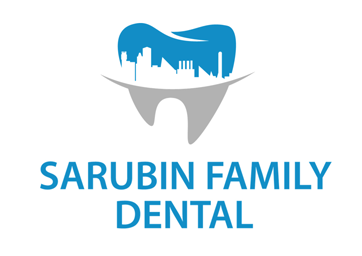It’s not an uncommon occurrence to look in the mirror and find you have stains on your teeth. And these stains can come in many different colors. They may be brown, yellow or even a temporary bright blue or red from eating brightly colored foods or candy. However, what if these discolorations are white? Where do these white spots come from and what can be done about them?
 Too Much Fluoride
Too Much Fluoride
White spots can sometime appear on perfectly healthy teeth. One such time this can happen is when the enamel of developing adult teeth is exposed to too much fluoride – a condition known as fluorosis. Fluorosis doesn’t damage the teeth but does unevenly bleach them. These leaves the teeth with white blotches and spots.
To avoid these discolorations from fluorosis, limit the amount of fluoride toothpaste you use when brushing your child’s teeth. The tiniest smear of toothpaste on the brush is sufficient for babies and toddlers, and not much more than that for younger children.
Later, when your child begins brushing his or her own teeth, encourage them to not overdo the amount of toothpaste they use.
Demineralization
Another, and more harmful cause of white spots on the tooth’s surface is demineralization. Demineralization is the gradual leaching of vital minerals, such as calcium, from the tooth enamel. Exposure to the acid in food or drink and plaque build up are the two most common causes of demineralization. Individuals wearing braces are quite susceptible to this.
Brushing and flossing are your two best weapons in the fight against demineralization.
Everyone must maintain good oral hygiene habits, but those wearing braces must be especially careful to clean away all plaque and food debris around the brackets in order to avoid white spot when the braces are removed.
And, for everyone, regular visits to the dentist are a must.
Hypoplasia of the Enamel
A less common, and more difficult to control, situation comes when the white spots on the enamel is caused by the condition known as hypoplasia. Enamel hypoplasia leaves the teeth with thinner enamel than normal, leaving the teeth more vulnerable to stains and decay. Causes for enamel hypoplasia in a child’s teeth include premature birth, malnutrition, and mother smoking while pregnant.
How to Treat White Spots
Obviously prevention is preferable to treatment. However, if white spots do appear on your teeth, there are a few ways to lessen or eliminate them. Two common ways your dentist can help remove these stains are by bleaching and microabrasion.
With microabrasion a very thin layer of enamel is scraped away, this removing or reducing the white spots and restoring a more uniform appearance to the teeth.
Bleaching (whitening) can be used with microabrasion or as a solution on its own to restore the even and bright appearance of your smile. The best possible results from bleaching will be found to come from a dentist rather than an in-home whitening kit. If you do want to bleach your teeth at home, find out what product your dentist recommends.
Not all stains can be removed no matter which of these solutions your try. When this occurs, the best option is veneers. With veneers the dentist attaches this pieces of porcelain to the teeth, creating a uniform, natural white appearance.
What to Do if You Have White Spots
If you’ve been bothered by the appearance of white spots on your teeth making you less willing to smile, some in and visit us. We will help you discover the cause and come up with the correct treatment plan for you.
